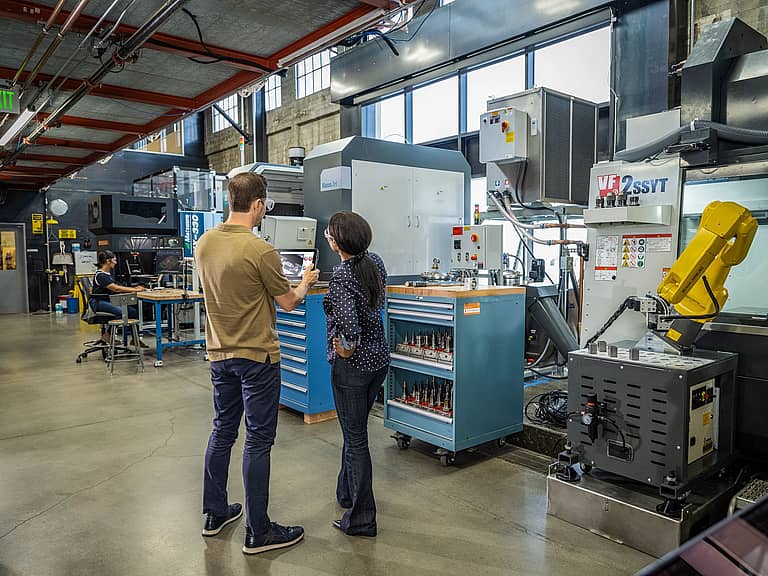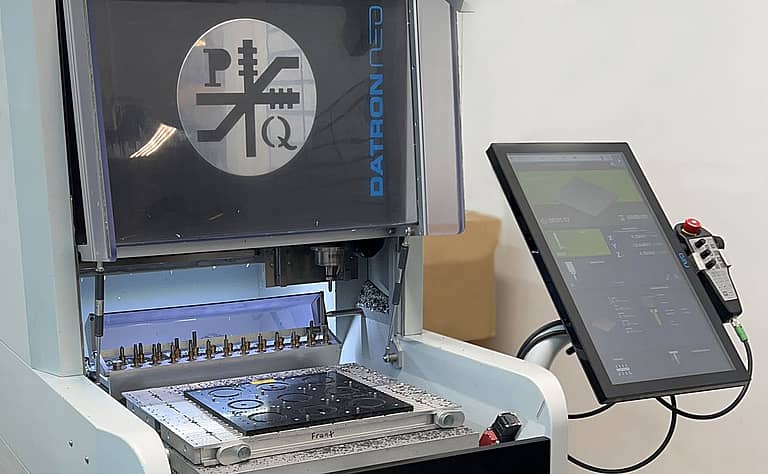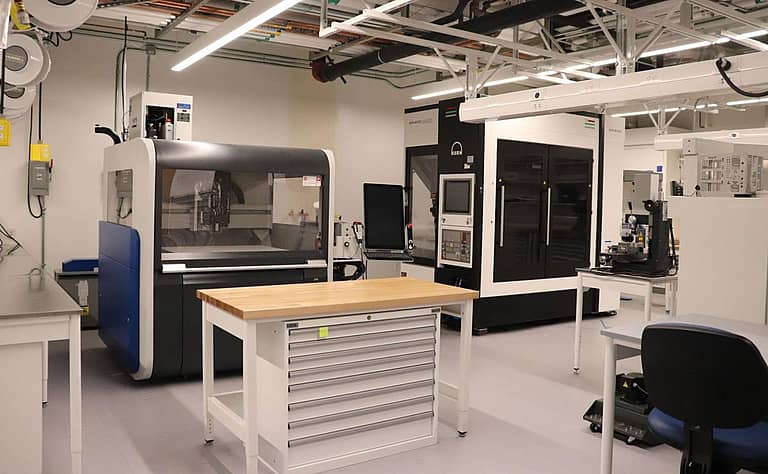Aftermarket Motorcycle Part Manufacturer Transforms His Business
Brad Wood was at a point in his career when he wanted to start his own business but wasn’t sure what he would do. He had a background in photography and product design, so he knew this would be a solid foundation to start a business. From his personal experience and his love for motorcycles, he recognized the need for an easy-to-install headlight upgrade for bikes. For many motorcycle aficionados, the standard stock headlight that comes with a bike didn’t necessarily fit the look or trend of the modern motorcycle. Stock headlines were simply not cool.
Additionally, most stock headlights were halogen, and with the new LED technology and optics, there were significant performance improvements as well. Brad knew from his own experience that the existing aftermarket headlights were very difficult to retrofit on bikes. Instructions were complicated and they were not plug-and-play. So, he decided to start his new business making aftermarket headlights for motorcycles, and founded MOTODEMIC in 2015.
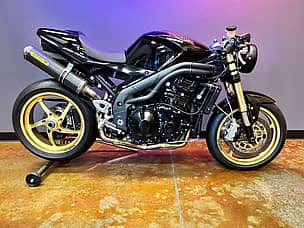
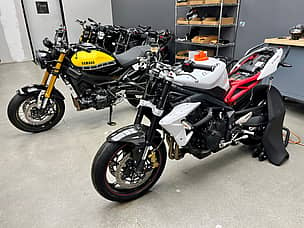
Brad spent the first three years developing designs, working with Autodesk Fusion and 3D printing designs. He spent a lot of money on materials, printing them with his older 3D printer that he purchased. Brad explains “It’s not high tolerance work but I know the bikes that I’m designing stuff for, and I needed the aesthetics to look right. It can’t be weird. So, I was doing lots of prototypes just for fitment. It wasn’t even necessarily that they looked bad, sometimes I just didn’t like where something ended up or it didn’t flow well. I started getting to a point where I would 3D print something and then I’d end up having it machined, as things weren’t working. I would spend $1000 on a very simple component in aluminum because they were only making one. I did that probably five or six times, was like, yeah, I’m not going to do this anymore.”
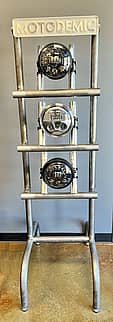
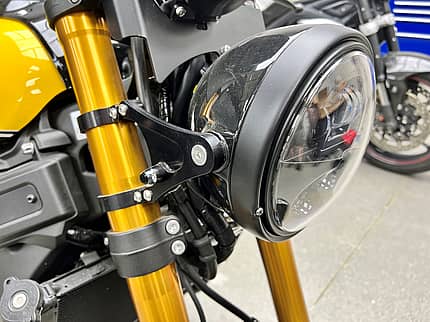
Finding The Right Machine for Specific Needs & Experience Level
Brad investigated more expensive 3D printers but concluded that it did not make sense to go that route when eventually he needed a working prototype in aluminum. So, he then started to research CNC machines. Brad had some basic knowledge of machining but was not a machinist. “So doing a Google search, of course, Haas came up. A couple of the manufacturers that were making my parts had Haas machines. However, every time I was around those machines, the controllers looked super complicated. There were buttons that had a slash on them with multiple buttons. This one button does like five things. That made no sense to me. It wasn’t something I was interested in learning. Also, I didn’t like the smell of the coolant in the shops. The floors were all sticky.” Brad comments.
Then Brad came across the DATRON website. “I saw the M8Cube and I was like, that’s amazing. Just the size of it! I was thinking of all these things I could make inside of it.” Brad enthusiastically says. Brad was then surprised to read that DATRON had a showroom just down the street from him in Livermore, CA. So, he hopped into his car and was very eager to get in front of a DATRON machine.
“The Neo in person caught my eye because of the price and it has as much to offer as the M8Cube but smaller. This giant touchscreen was like, oh, I use phones. I use iPads. I can touch things. I can see them. I liked how it would render the part on the screen. So, you can easily and quickly see if you loaded the wrong program. I loved the features like using your finger to paint where the part is in the machine, the 40,000-rpm spindle, and the integrated vacuum table,” states Brad. So, it was not a difficult decision for Brad to purchase a DATRON neo. “Just the ease of entry for someone that literally had never machined a part in their life, to running production parts within six months was game changing” explains Brad.
After The Purchase: How DATRON Supports Clients
Once Brad made the decision to purchase and lease a DATRON neo, he could hardly wait to get his hands on his new machine. Before Brad got the machine, he had a little project he wanted to machine. He called Chris Hopkins, DATRON’s Director of Business Development, to see if he would mind helping him out with his project. Chris offered to meet him at the Livermore office on a Saturday to cut a few of his parts. This helped Brad understand the machining workflow before he even received his training. It just reaffirmed with Brad that he not only purchased the right machine, but he’s also working with the right company.
After receiving his machine, Brad would often call DATRON and say things like “Can your machine make this or why is the neo like this? Brad states “Having some of the online help guides is great, but having an easy connection to DATRON and getting answers quickly has been amazing. Being able to make phone calls and say, hey, the machine’s doing this. What am I doing wrong or what speeds would you use for this tool?”
Another valuable benefit Brad appreciates is that DATRON has its own line of cutting tools. “This was one of the reasons I got drawn into it as well. You guys had the machine, you sold the tools and Fusion worked seamlessly with them both. There wasn’t a lot of learning curve, or the curve was much lower. With all the cutting data preprogrammed, it made programming parts very easy because I think feeds and speeds is probably the scariest thing for someone that’s new.”
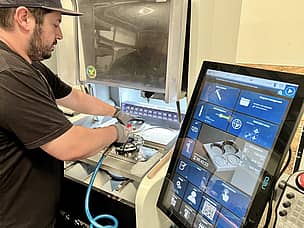
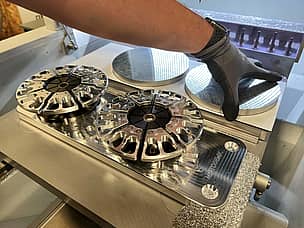
CNC Machine Learning: DATRON neo
From the time Brad received the machine, he felt proficient on the neo after about three weeks. “A lot of that time was just learning how to place things and then how to program it to run those things in a sequence. When I first started, I had the measuring all out of whack. So, I had things happening out of order. But I would learn, make corrections, and move on. I also had to learn CAM in that time as well. Once I had everything dialed in, I would comfortably say within 12 weeks, I was running parts in full production.” explains Brad.
Having the machine also allowed Brad’s creative juices to flow compared to when he was just 3D printing and subbing out parts. “I kept pushing my envelope further and further. There was a period when I was just throwing new stuff at it. It opened new parts that I could design because now I understood how to make them. I had come up with this whole fixturing process to hold these things on the back end. Then I figured out how to make those fixtures a lot easier. So, it just started rapidly progressing and now the neo just runs parts. I don’t do anything about it because these things are all established.” states Brad.
So once Brad got through the short learning curve, he started to quantify his return on investment. “There were a couple parts that I was paying somebody else to make. I was doing the math and concluded that if we run them, it pays for the machine. We were paying about $2500 a month for these parts. So based on these prices and with the material costs, I calculated that if I ran the neo for four days in a month, it paid my payment. So now I have a free machine for the next 26 days. Actually, my last payment is this month, so it’s going to be paid off soon.”
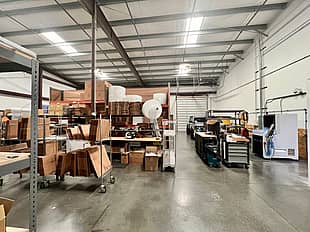
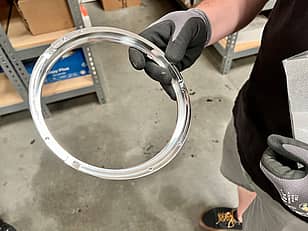
Brad’s discovery of the neo with the support he has with DATRON has allowed him to transform his business. The neo allowed MOTODEMIC to move away from 3D printing inadequate parts and high-cost outsourced prototypes to machining the parts himself, with better quality, and faster turnaround times, all while saving money.
Manufacturing
MOTODEMIC is devoted to function influencing form, putting quality above scale, and amplifying the connection between you and your machine.
MOTODEMIC had spend 3 years printing deisigns using a 3D printer. With the time and money they were spending, they began to seek out CNC machines that would result in less money and time spent, while also producing higher-quality parts.




